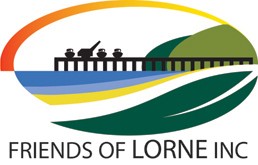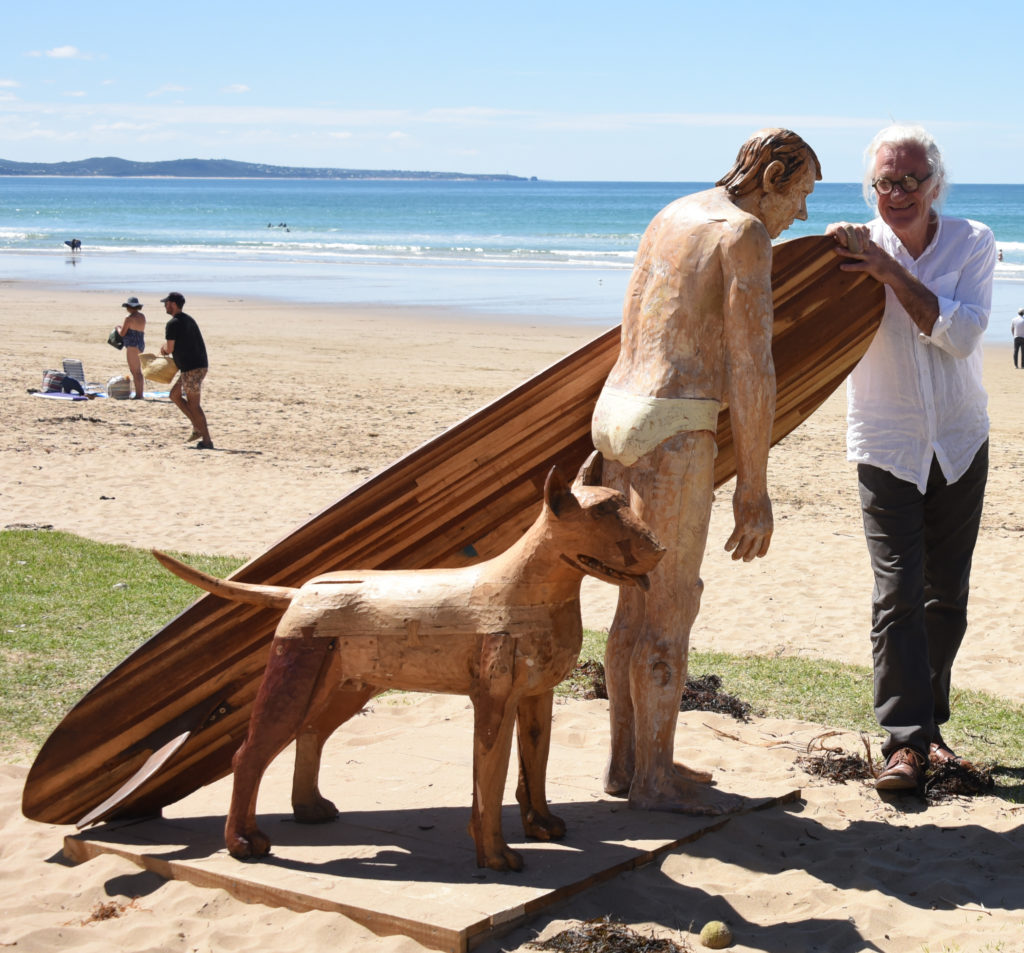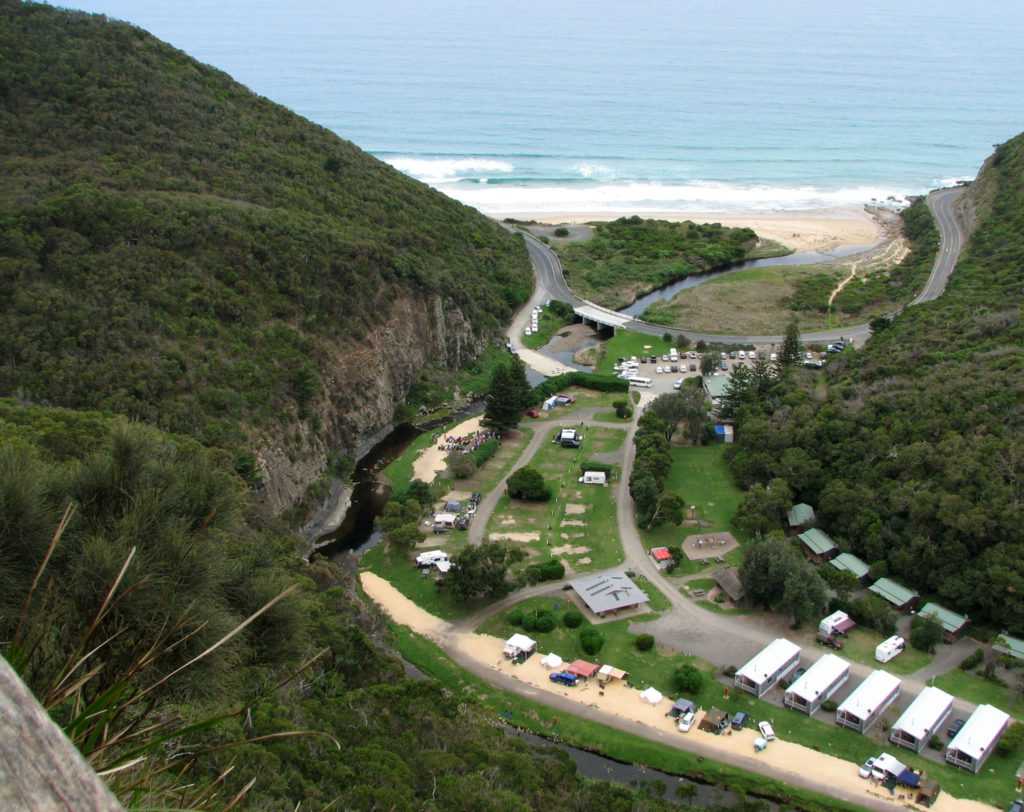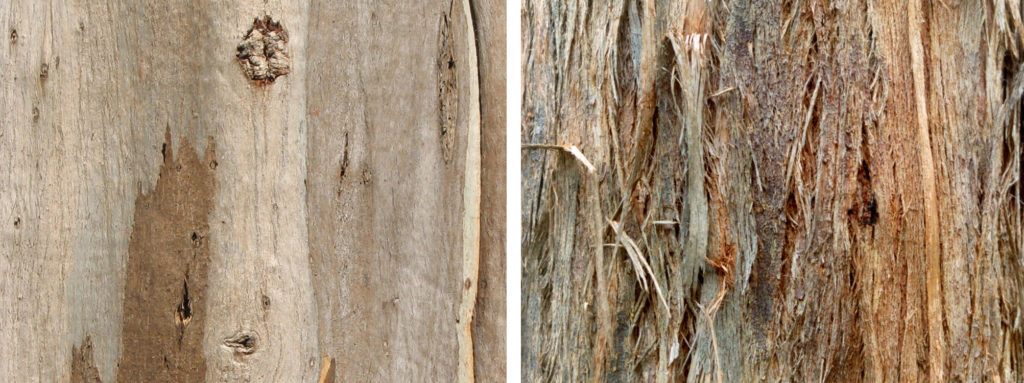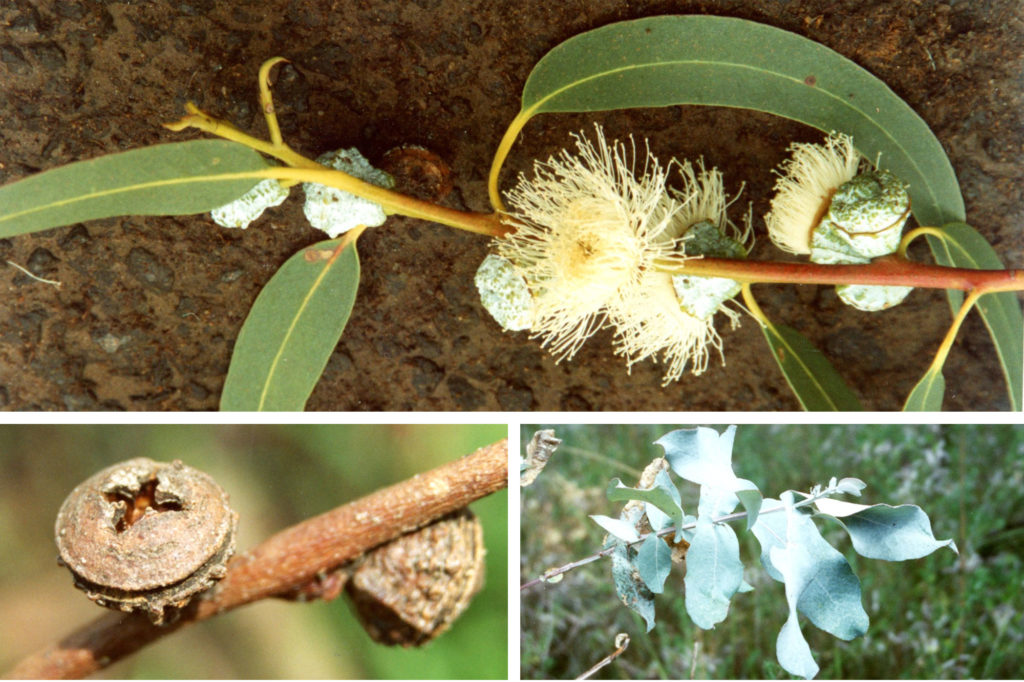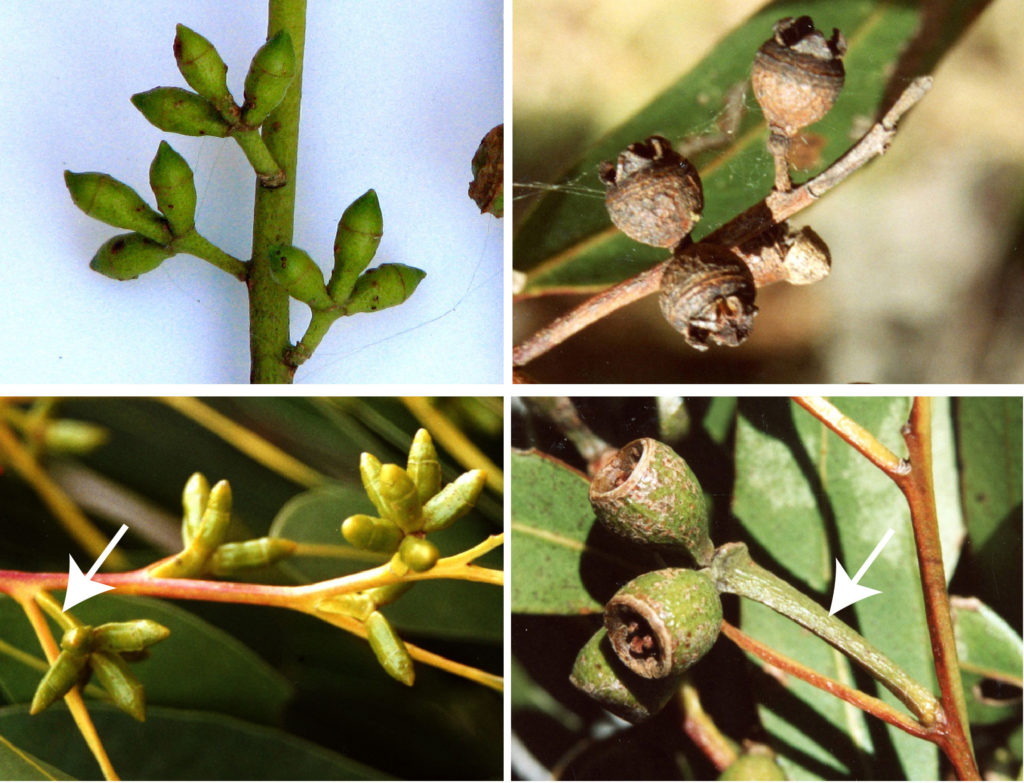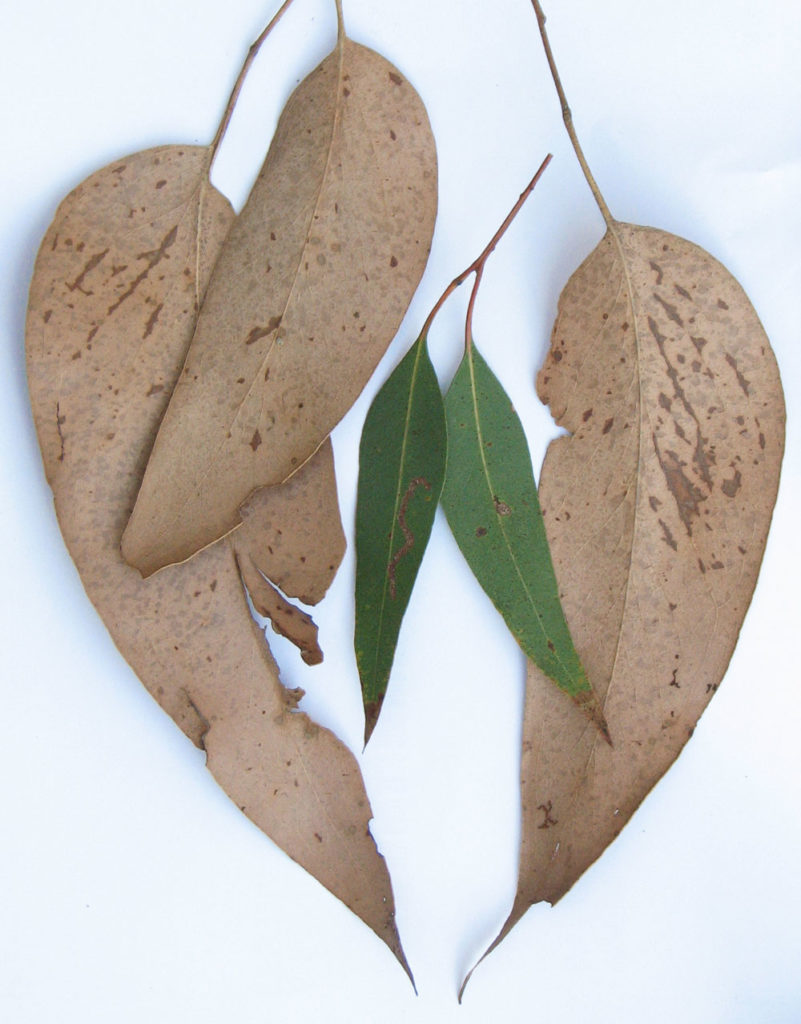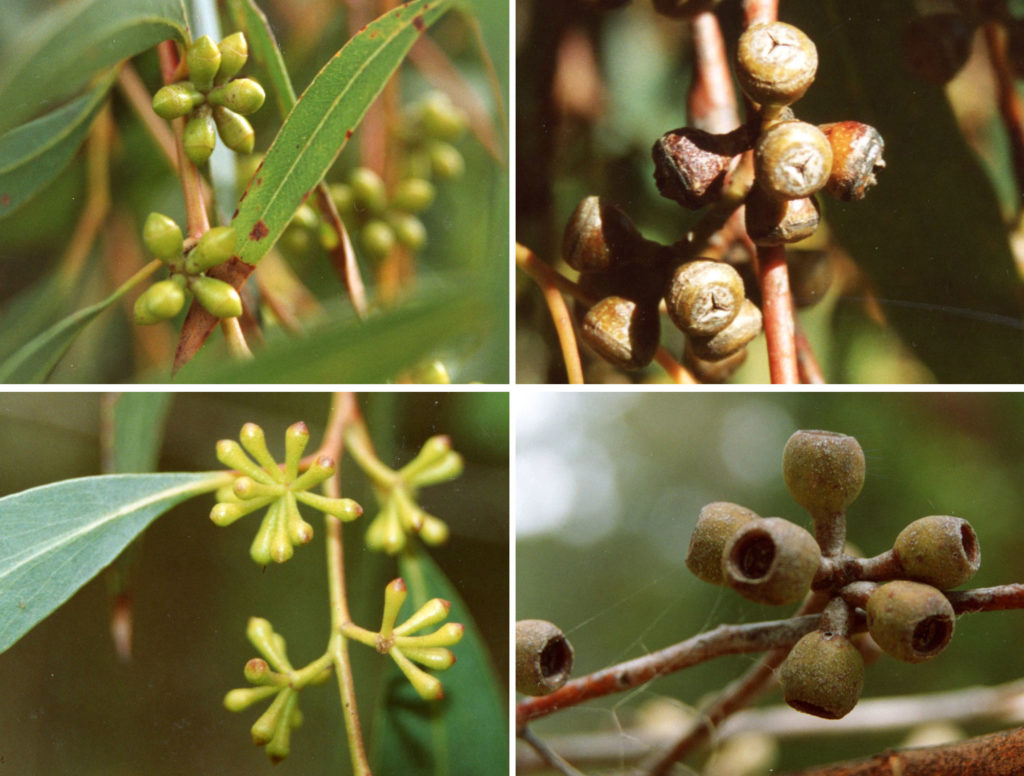Natural history note on Lorne’s gum trees
From Mary Lush
Smooth-barked eucalypt on left, rough-barked one on the right. The name gum tree is sometimes restricted to trees with smooth barks, but here I use it for both. This particular rough bark is an example of a stringy bark. Images: Mary Lush
CSIRO asserts, with reckless abandon and unnecessary precision, that there are 934 species of eucalypts in Australia. What makes this a risky statement is the tendency of botanists to relabel plants and get excited about whether the term ‘eucalypt’ includes more than the genus Eucalyptus (CSIRO takes the view that it does, more on this later).
About 20 species of eucalypts occur naturally in the Otway Ranges, but just four or five species make up the lion’s share of those that occur naturally in Lorne. This limited number brings acquiring expertise on local gum trees well within the range of the possible.
When sizing up your unknown eucalypt the first thing to check is the bark. Is it rough or smooth (see photo above)? You should assess this about half way up the trunk because some species and individuals classed as smooth-barked have rough bark at the base. Just to confuse the issue.
Smooth barks
If your unknown eucalypt is smooth-barked, then there is something like a 90% chance that it is a blue gum (scientifically speaking, Eucalyptus globulus). These are the ones that scatter large, warty nuts all over the ground, give Lorne its distinctive smell and simply are all over the place. Just about every eucalypt along the foreshore between the surf club and the pier is a blue gum. If your tree is resprouting from the trunk, then the new growth may be blueish, as is the foliage on very young (juvenile) blue gums.
Bits of blue gum. Top: leaves buds and open flowers. Lower left: dry nuts. Lower right: juvenile, ‘blue’ leaves. Images: Mary Lush
It is just possible, but fairly unlikely, that your smooth-barked gum is not a blue gum but a manna gum or mountain grey gum.
Manna gums (Eucalyptus viminalis) grow at Teddy’s Lookout (see below). Teddy’s is borderline for my definition of being ‘within Lorne’, but I assume they may be in more central parts too. Manna gum buds mostly come as a group of three, in an approximately cross shaped arrangement. Once the buds have become nuts, one or two of the original threesome has often fallen off, so an imaginative reconstruction may be needed to see a cross.
Mountain grey gums (Eucalyptus cypellocarpa), are not common on the seaward slopes of Lorne, but are very common just a little inland. You can see them on the upper and lower corners of the Bay Street/Lorne Avenue intersection. It may be hard to get your hands on grey gum buds without tree climbing equipment, but scrabbling round on the ground below sometimes yields some twigs with buds or nuts. Look at the stalk that bears the buds/nuts. Is it flattish? And are there more than three buds in a group? If so, probably a mountain grey gum.
Buds and nuts of two other gum-barked eucalypts found in Lorne. Top two images: manna gum. Bottom two: mountain grey gum (flattish stems arrowed). Images: Mary Lush
Rough barks
Moving on to rough-barked trees, these will probably be either scent-barks (Eucalyptus aromaphloia) or messmates (Eucalyptus obliqua).
Leaf size and shape are usually downplayed as diagnostic features, but they are really handy when it comes to Lorne’s rough barks. If the leaves are large and wide it’s a messmate, small and narrow, a scent-bark.
Large (dried) leaves of a messmate with small green leaves of a scent-bark. Image: Mary Lush
Scent-barks abound along Otway Street and Lorne Avenue. One of their characteristics is supposed to be scented bark, but I find this pretty iffy as a diagnostic feature. Their torpedo shaped buds occur in clusters of about five (or a couple more).
Most of the rough barks in Queens Park are messmates, as are the majority of rough barks along the Bert Alsop Track in North Lorne. All the eucalypts around the Bert Alsop plaque (just north-east of the North Lorne picnic area) are messmates bar one small tree near the road which is a scent-bark. Messmates have clusters of up to 15 (11 in the photo below) club-shaped buds and are responsible for the spectacular display of flowers we see every summer as we drive into Anglesea from Geelong.
Buds and nuts of Lorne rough-barked eucalypts. Top two: scent-barks. Bottom two: messmates. Images: Mary Lush
Others
Gardeners have introduced lots of non-local eucalypts to Lorne, but something about them often alerts you to the fact that they are imports. They might have huge red flowers and large nuts, in which case they are often Corymbia ficifolia and come from Western Australia, or interesting bark like the spotted gums (Corymbia maculata) from the NSW coast. Not all ‘eucalypts’ as you can see belong to the genus Eucalyptus. If you want to learn more, Costermans’ “Native Trees and Shrubs of South-Eastern Australia” is an excellent reference.
And eucalypts are part of complex food chains involving, among other things, sundry insects. In my experience psyllids and sawfly larvae make life hazardous for young Lorne eucalypts, and over the past summer cupmoth larvae did a lot of damage to mature trees over a wide area.
Whatever the insect, it will be food for other animals so we should be careful about assuming that trees need to be protected from infestations. Often, but not always, ‘plagues’ come and go without doing long-term damage. The Corangamite CMA has more information about the cupmoth attacks of last summer here.
